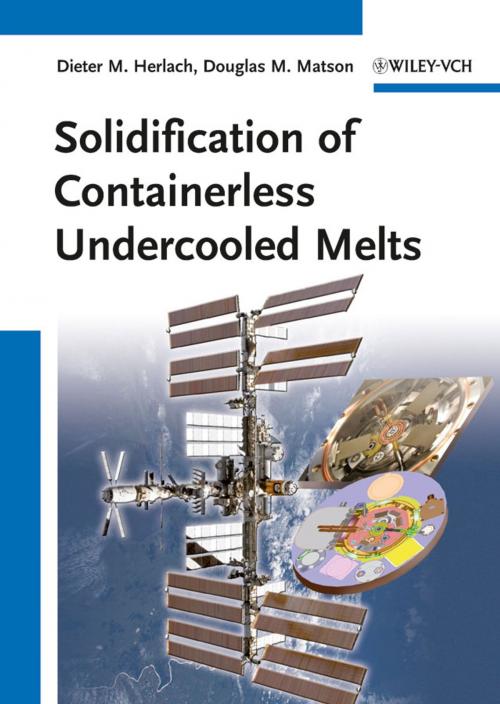Solidification of Containerless Undercooled Melts
Nonfiction, Science & Nature, Technology, Material Science| Author: | ISBN: | 9783527647927 | |
| Publisher: | Wiley | Publication: | May 21, 2012 |
| Imprint: | Wiley-VCH | Language: | English |
| Author: | |
| ISBN: | 9783527647927 |
| Publisher: | Wiley |
| Publication: | May 21, 2012 |
| Imprint: | Wiley-VCH |
| Language: | English |
All metallic materials are prepared from the liquid state as their parent phase. Solidification is therefore one of the most important phase transformation in daily human life. Solidification is the transition from liquid to solid state of matter. The conditions under which material is transformed determines the physical and chemical properties of the as-solidified body. The processes involved, like nucleation and crystal growth, are governed by heat and mass transport.
Convection and undercooling provide additional processing parameters to tune the solidification process and to control solid material performance from the very beginning of the production chain.
To develop a predictive capability for efficient materials production the processes involved in solidification have to be understood in detail.
This book provides a comprehensive overview of the solidification of metallic melts processed and undercooled in a containerless manner
by drop tube, electromagnetic and electrostatic levitation, and experiments in reduced gravity.
The experiments are accompanied by model calculations on the influence of thermodynamic and hydrodynamic conditions that control
selection of nucleation mechanisms and modify crystal growth development throughout the solidification process.
All metallic materials are prepared from the liquid state as their parent phase. Solidification is therefore one of the most important phase transformation in daily human life. Solidification is the transition from liquid to solid state of matter. The conditions under which material is transformed determines the physical and chemical properties of the as-solidified body. The processes involved, like nucleation and crystal growth, are governed by heat and mass transport.
Convection and undercooling provide additional processing parameters to tune the solidification process and to control solid material performance from the very beginning of the production chain.
To develop a predictive capability for efficient materials production the processes involved in solidification have to be understood in detail.
This book provides a comprehensive overview of the solidification of metallic melts processed and undercooled in a containerless manner
by drop tube, electromagnetic and electrostatic levitation, and experiments in reduced gravity.
The experiments are accompanied by model calculations on the influence of thermodynamic and hydrodynamic conditions that control
selection of nucleation mechanisms and modify crystal growth development throughout the solidification process.















